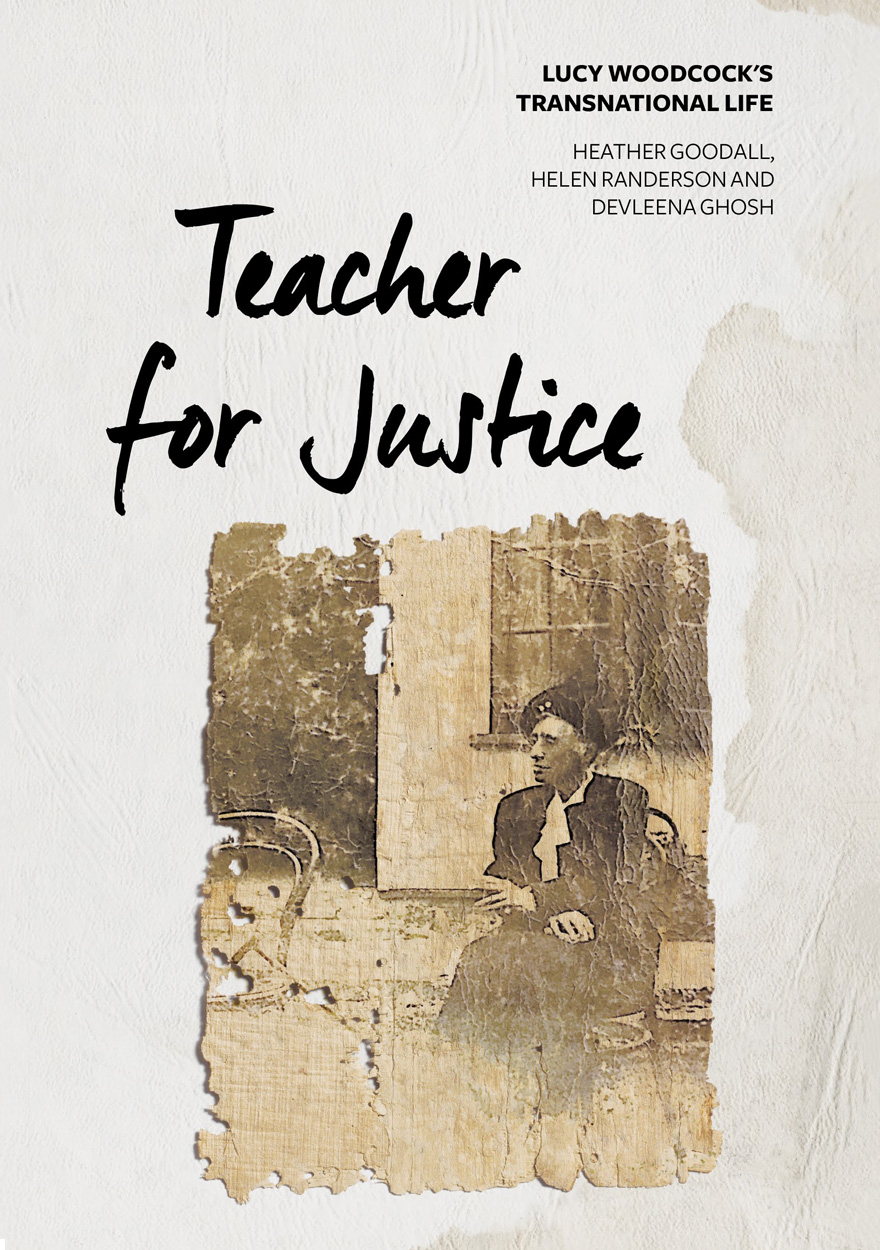Search titles
Displaying results 11 to 20 of 69.

Australian Journal of Biography and History: No. 5, 2021 »
Publication date: August 2021
This special issue of the Australian Journal of Biography and History focuses on political biography. The 10 peer-reviewed articles and review essays collectively demonstrate that political biography is growing beyond just ‘one damned life after another’, and that there are new and productive paths open for practitioners, readers and critics of this genre. They offer a critical snapshot of the diverse approaches and attitudes to political biography in contemporary Australia.
Forty years after her first critical examination of the state of political biography in Australia, Kate White makes a bold call for academics to ‘rethink their approach’ by considering novel strategies to ‘move beyond the narrative form’. Blair Williams demonstrates that although increasing numbers of women are writing and practising political biography, there remain few good examples of feminist political biography; more can be done to develop a framework for feminist political biography in Australia. Joshua Black examines the political memoir and diary genres in the broader context of the rise of life writing in the twentieth century, adopting former minister Neal Blewett’s A Cabinet Diary (1999) as a case study. In a sweeping examination of prime ministerial portraiture, Sarah Engledow reconsiders the visual performance of leadership for posterity and, ultimately, questions the biographical utility of such performances. Daniel Oakman delineates the links that politics has to mainstream Australian life via that great staple of popular culture, sport. Chris Wallace in her account of a quietly controversial and eventually abandoned biography of Robert Menzies early in his second prime ministership demonstrates that life stories are powerful but risky commodities in the fast-changing political domain. Similarly, in a methodological reflection on his award-winning biography Tiberius with a Telephone, Patrick Mullins critically explores the concerted attempts of the former prime minister to control and manipulate the public and archival record of his life.
Robert Tickner, the only contributor who was also an elected political practitioner, uses his very personal article to call on others to write political and policy memoirs as a ‘public good’ that helps to encourage the ‘noble enterprise’ of participation in public life. In his analysis of backbencher memoirs, Stephen Wilks calls for more of the foot soldiers of politics—backbenchers, humble and otherwise—to write memoirs as an insight into the working lives of the typical politician, and to explore what wider significance they have as political players. And Tim Rowse and Murray Goot indicate in a powerful review essay that critically examines Warren Mundine’s political memoir In Black + White, political life narratives are implicated in the difficult postcolonial politics of race, representation and recognition.
Download for free
Not available for purchase

Australian Dictionary of Biography, Volume 19 »
1991–1995 (A–Z)
Edited by: Melanie Nolan
Publication date: March 2021
Volume 19 of the Australian Dictionary of Biography (ADB) contains concise biographies of individuals who died between 1991 and 1995. The first of two volumes for the 1990s, it presents a colourful montage of late twentieth-century Australian life, containing the biographies of significant and representative Australians.
The volume is still in the shadow of World War II with servicemen and women who enlisted young appearing, but these influences are dimming and there are now increasing numbers of non-white, non-male, non-privileged and non-straight subjects.
The 680 individuals recorded in volume 19 of the ADB include Wiradjuri midwife and Ngunnawal Elder Violet Bulger; Aboriginal rights activist, poet, playwright and artist Kevin Gilbert; and Torres Strait Islander community leader and land rights campaigner Eddie Mabo. HIV/AIDS child activists Tony Lovegrove and Eve Van Grafhorst have entries, as does conductor Stuart Challender, ‘the first Australian celebrity to go public’ about his HIV/AIDS condition in 1991.
The arts are, as always, well-represented, including writers Frank Hardy, Mary Durack and Nene Gare, actors Frank Thring and Leonard Teale and arts patron Ian Potter. We are beginning to see the effects of the steep rise in postwar immigration flow through to the ADB. Artist Joseph Stanislaw Ostoja-Kotkowski was born in Poland. Pilar Moreno de Otaegui, co-founded the Spanish Club of Sydney. Chinese restaurateur and community leader Ming Poon (Dick) Low migrated to Victoria in 1953.
Often we have a dearth of information about the domestic lives of our subjects; politician Olive Zakharov, however, bravely disclosed at the Victorian launch of the federal government’s campaign to Stop Violence Against Women in 1993 that she was a survivor of domestic violence in her second marriage.
Take a dip into the many fascinating lives of the Australian Dictionary of Biography.

At Home in Exile »
A Memoir
Authored by: Helga M Griffin
Publication date: February 2021
This is a story of a girl’s construction of her identity, and of her family’s search for a place in the world, for the Heimat that is so resonant for those of German background. We follow Helga through an adventurous childhood in Iran, whose vast open spaces her mother called ‘my spiritual home’. Her engineer father worked on a grand scale, designing and laying roads and railways, and tunnelling through mountain ranges. Then came the invasions of World War II, and the family, half-German, half-Austrian, found themselves on a long voyage to Australia, designated enemy aliens. They were interned for nearly five years in the dusty Victorian countryside. On their release at the end of the War, stranded in Melbourne, they sought another home. The children were dispatched to convents, and at the Academy of Mary Immaculate, Helga found a temporary homeland, in faith.
Everyday life in the Australia of the late 1940s and early 1950s is freshly seen by this feisty, loving migrant family. Through their eyes, we encounter a strange place, Australia, as if for the first time. Helga’s development from a thoughtful, sensitive child to a self-possessed young woman, wrestling with her faith and with how to live a decent life, is vividly recounted.

Australian Journal of Biography and History: No. 4, 2020 »
Publication date: December 2020
This issue of the Australian Journal of Biography and History includes eight peer-reviewed articles, and 12 book reviews. Each of the articles uses biography to illustrate historical themes and to add texture to historical episodes. Patricia Clarke examines the role of four women journalists who were recruited by the Australian Government to tour operational bases in eastern Australia during a critical phase in the Pacific War. In the field of journalism, women faced systemic barriers to employment; the women described in Clarke’s article went to great efforts to attain equality in the workplace, yet they were often restricted to weekly publications while the dailies remained the province of men. Lyndon and Lyne Megarrity, in their article on the two wives of the Queensland businessman and later premier Robert Philp (1899–1903, 1907–08), use the biographies of Jessie (née Bannister; 1856–90), and Mina (née Munro; 1867–1940) to illustrate the changes in the role of elite Queensland women over the relatively short period of a decade.
The next two articles consider the problems of constructing biographies of those who are essentially invisible in the historical record. Melanie Nolan, Christine Fernon and Rebecca Kippen discuss the ’first-fleeter’ Sarah Bellamy’s seemingly ‘insignificant life’ to illustrate various aspects of the British colonisation of the continent. The biography of the Boonwurrung man Kurrburra (1797–1849) forms the subject of the contribution by Ian Clark, Rolf Schlagloth, Fred Cahir and Gabrielle McGinnis. By setting out to consider the whole of Kurrburra’s life rather than only the moments of contact (or conflict) with colonial society, he can be re-presented as one who was respected and important in his Aboriginal community, and who managed, negotiated and sought to control his interactions with the colonising forces.
Sophie Scott-Brown, in her article on the British Marxist historian Raphael Samuel, considers the utility of biography in relation to intellectual history, and the relationship between what she terms ‘cultural persona’ and the empirical personality. By contrast, Michael Davis’s biographical portrait of the anthropologist Leonhard Adam reveals a figure who some viewed as an outsider, but whose works on Aboriginal art were highly successful. In his study of the Australian delegation to the 1919 Paris Peace Conference, David Lee looks at the men who between them forcefully asserted Australia’s position, and thus contributed to the country’s consolidation as an independent nation-state during the inter-war period. In the final article, Stephen Wilks argues that biography is founded on human agency, and that political history is ‘rich in interpersonal interaction’. He concludes that biography provides scholars with ‘a platform for exploring the tortuous chains of decision, chance and error that characterise the political past and the legacies it imparts’.
Download for free
Not available for purchase

‘Now is the Psychological Moment’ »
Earle Page and the Imagining of Australia
Authored by: Stephen Wilks
Publication date: October 2020
Earle Christmas Grafton Page (1880–1961) – surgeon, Country Party leader, treasurer and prime minister – was perhaps the most extraordinary visionary to hold high public office in twentieth-century Australia. Over decades, he made determined efforts to seize ‘the psychological moment’, and thereby realise his vision of a decentralised, regionalised and rationally ordered nation.
Page’s unique dreaming of a very different Australia encompassed new states, hydroelectricity, economic planning, cooperative federalism and rural universities. His story casts light on the wider place in history of visions of national development. He was Australia’s most important advocate of developmentalism, the important yet little-studied stream of thought that assumes that governments can lead the nation to realise its economic potential.
His audacious synthesis of ideas delineated and stretched the Australian political imagination. Page’s rich career confirms that Australia has long inspired popular ideals of national development, but also suggests that their practical implementation was increasingly challenged during the twentieth century.
Effervescent, intelligent and somewhat eccentric, Page was one of Australia’s great optimists. Few Australian leaders who stood for so much have since been so neglected.

What’s France got to do with it? »
Contemporary memoirs of Australians in France
Authored by: Juliana de Nooy
Publication date: July 2020
While only one book-length memoir recounting the sojourn of an Australian in France was published in the 1990s, well over 40 have been published since 2000, overwhelmingly written by women. Although we might expect a focus on travel, intercultural adjustment and communication in these texts, this is the case only in a minority of accounts. More frequently, France serves as a backdrop to a project of self-renovation in which transplantation to another country is incidental, hence the question ‘What’s France got to do with it?’
The book delves into what France represents in the various narratives, its role in the self-transformation, and the reasons for the seemingly insatiable demand among readers and publishers for these stories. It asks why these memoirs have gained such traction among Australian women at the dawn of the twenty-first century and what is at stake in the fascination with France.

Australian Journal of Biography and History: No. 3, 2020 »
Publication date: April 2020
The articles in this issue of the Australian Journal of Biography and History consider subjects who have lived across and between national and internal Australian boundaries, and the authors have thus been compelled to address the methodological and theoretical problems of mobility. Kate Bagnall addresses the seemingly insurmountable problem of writing about Chinese women who settled in Australia in the second half of the twentieth century. Contrasting with the dearth of information on Chinese women immigrants to colonial New South Wales, Jackie Dickenson’s chapter on Hong Kong–based merchant and trader Melbourne-born Elma Kelly (1895–1974) benefits from an abundance of documentation, both in the realm of the personal and official. In her article on the Corney family in the aftermath of World War I, Alexandra McKinnon considers the record of loss and sorrow preserved in the archives of the Australian War Memorial. Very different methodological questions are explored by Suzanne Robinson in her reflections on writing a biography of the Australian composer Peggy Glanville-Hicks (1912–90). As a feminist biographer, Robinson had to face a most ‘troublesome question’ of whether her subject’s considerable imperfections, which became evident during research, risked undermining her status as a composer, particularly one whose reputation was yet to be fully established.
A different form of methodological question is posed by Pat Buckridge in his article on three generations of Macdougall men, each of whom became journalists—Dugald (1833–79), who also excelled in business and politics, Dugald the younger (1872–1947), and James (1903–95). The question Buckridge considers is whether his subjects can ‘usefully be considered as a grouped biographical entity signifying more than the sum of its parts, which is to say more than the three separate lives’. By contrast, Peter Crabb’s article on the colonial goldfields reporter John Augustus Hux (1826–64) relates the story of a single figure who, having made connections in his English homeland that would serve him well in Australia, provided eyewitness accounts of a number of significant goldfields in New South Wales, which were widely read in the colony and thus helped to form popular images of the industry. Finally, in a departure from the theme of mobility characterising the other contributions, Nichola Garvey documents her experiences of working with the Western Australian iron ore magnate Andrew Forrest to research and write his biography. In what was conceived by both the author and the subject as an ‘authorised biography’, Garvey’s article raises some fundamental questions about biographical writing of living persons, including the utility and pitfalls of what she calls ‘expressivist anthropology’, as well as the scope of authorisation in biographical writing.
Download for free
Not available for purchase

Australian Journal of Biography and History: No. 2, 2019 »
Publication date: October 2019
The second issue of the Australian Journal of Biography and History is a joint project between the National Centre of Biography at The Australian National University (ANU), and the Canberra and District Historical Society (CDHS). It seeks to recognise, perhaps reiterate, the relationship between the study of biography, as exemplified by the Australian Dictionary of Biography (ADB), and the practice of local and family history and heritage, the mission of the society. Most of the contributors are members of the society, and have been involved in the often painstaking and minute study of aspects of the history of Canberra and its region for many years. In ‘A City and Its People: Canberra in the Australian Dictionary of Biography’, Karen Fox explores Canberra history by discussing some of wide array of people ‘who have lived, worked, loved, and fought in the Canberra district’, and who are represented in the ADB. James McDonald, in his article ‘A Good Sheep Station Ruined’, examines the pastoral origins of the Canberra district, finding that the industry in the region was, before the founding of the capital city, a centre of innovation and enterprise, with stations such as Henry ‘Babe’ Curran’s Ginninderra a national exemplar of the wool industry. In a second article, ‘Migration as an Opportunity for Reinvention’, McDonald discusses the potential of immigration to refashion identities, using the biographies of Alfred and Margaret Rich, early settlers at Gundaroo, who had faced disadvantages in England because of their racial backgrounds.
‘Three Years in the Life of Chief Constable Patrick Kinsela’, by Gillian Kelly, examines the role of the first policeman in the district, who took up his posting at the nascent town of Queanbeyan in 1837, and in many ways exemplified the system of justice in the region until his early death in 1841. Kinsela is an unusual biographical subject as very little is known about his life until he assumed the role, while from then on, his life and times comes into focus by virtue of his reports, reports in the local press and colonial government inquiries. Michael Hall, in his article ‘The Sentinel over Canberra’s Military History’, explores the connections between the Anglican Church of St John the Baptist, now in the Canberra suburb of Reid, and the military, and the war experiences of some of its parishioners. The final two articles of the issue move towards aspects of the modern history of Canberra, the first exploring the life stories of Vince and Viola Kalokerinos who, for many years, ran a milk bar at Curtin, a place that has assumed a prominent place in both the commercial and social history, and indeed has become almost a part of the folklore, of the city. Their story is a reminder of the impact of Greek immigrants on the development of Canberra, and their willingness to work long hours to provide essential services to a population that was made up largely of government employees. Finally, Nick Swain discusses the life and work of one of Canberra’s early photographic entrepreneurs, Les Dwyer, who came to Canberra as a construction labourer in 1924 but, as a consequence of the Depression and workplace injury, converted a hobby into an enterprise. Included also are two essay length review articles, and a series of reviews on recently published Australian biographical works.
Download for free
Not available for purchase

Rosalie Gascoigne »
A Catalogue Raisonné
Authored by: Martin Gascoigne
Publication date: September 2019
Rosalie Gascoigne (1917–1999) was a highly regarded Australian artist whose assemblages of found materials embraced landscape, still life, minimalism, arte povera and installations. She was 57 when she had her first exhibition. Behind this late coming-out lay a long and unusual preparation in looking at nature for its aesthetic qualities, collecting found objects, making flower arrangements and practising ikebana. Her art found an appreciative audience from the start. She was a people person, and it pleased her that through her exhibiting career of 25 years, her works were acquired by people of all ages, interests and backgrounds, as well as by the major public institutions on both sides of the Tasman Sea.
Watch the live video stream from the launch of Rosalie Gascoigne: A Catalogue Raisonné, held on Tuesday 17 September 2019 at the National Gallery of Australia, Canberra, with Director Nick Mitzevich and author Martin Gascoigne on the NGA's Facebook page.
In the media
Read the ANU Reporter article: Art in road signs.
Read the Canberra Times article: Assembling Rosalie Gascoigne's catalogue.

Teacher for Justice »
Lucy Woodcock's Transnational Life
Publication date: August 2019
‘Teacher for Justice is a major contribution to the history of the women’s movement, working‑class activism and Australian political internationalism. But it is more than this. By focusing on the life of Lucy Woodcock – an unrecognised and under-researched figure – this book rewrites the history of twentieth-century Australia from the perspective of an activist who challenged conventions to fight for gender, race and class equality, exploring the complex and multi-layered intersections of these aspects. It explores Woodcock’s personal relationships and the circles she mixed in and the friendships she forged, as well as the conventions she challenged as a single woman in possibly a same-sex relationship. The book makes a key contribution to the history of progressive education and the experience of women teachers. Above all, it charts the life of a transnational figure who made connections globally and, in particular, with refugees and with women in India and the Asian region. It is a detailed, thoroughly researched and richly textured history which places Woodcock within the context of the times in which she lived.’
Joy Damousi, Professor of History, University of Melbourne
‘Meet Lucy Woodcock, a complex, undaunted woman in a tough and changing world. From her role as a public school principal in Depression and wartime, to her union and feminist organising, to her transnational engagements for peace, this clear and thoughtful book brings to life forgotten forms of activism. It’s the gripping story of how Lucy navigated the minefields of gender, class, race and coloniality to change her world.’
Raewyn Connell, Professor Emerita, University of Sydney
‘Just over a century ago, the last of the pupil-teachers, Lucy Woodcock, co-founded the NSW Teachers Federation. So many of the principles and traditions that underpin our union today can be traced back to the lifelong work of Lucy Woodcock. She fought for the industrial rights of teachers deep in the knowledge of the broader social and economic context in which she lived and worked. Too often the role of working-class women whose influence is profound is ignored. This biography installs Lucy Woodcock into her rightful place as pivotal player in the history of twentieth-century Australia.’
Maurie Mulheron, President, NSW Teachers Federation
‘A fascinating history of a fascinating woman: Lucy’s interests were so broad and so modern – equal pay, racism, internationalism, Indigenous rights and anti-war struggles were all part of Lucy’s world. She had a vision beyond nationalism, championed the cause of world peace when peace was being treated as a dirty word and saw women as global citizens. Lucy was one of the heroes of our disgracefully unfinished Equal Pay struggle.’
Hon Dr Meredith Burgmann, anti-racism and peace activist, former President of the NSW Legislative Council



